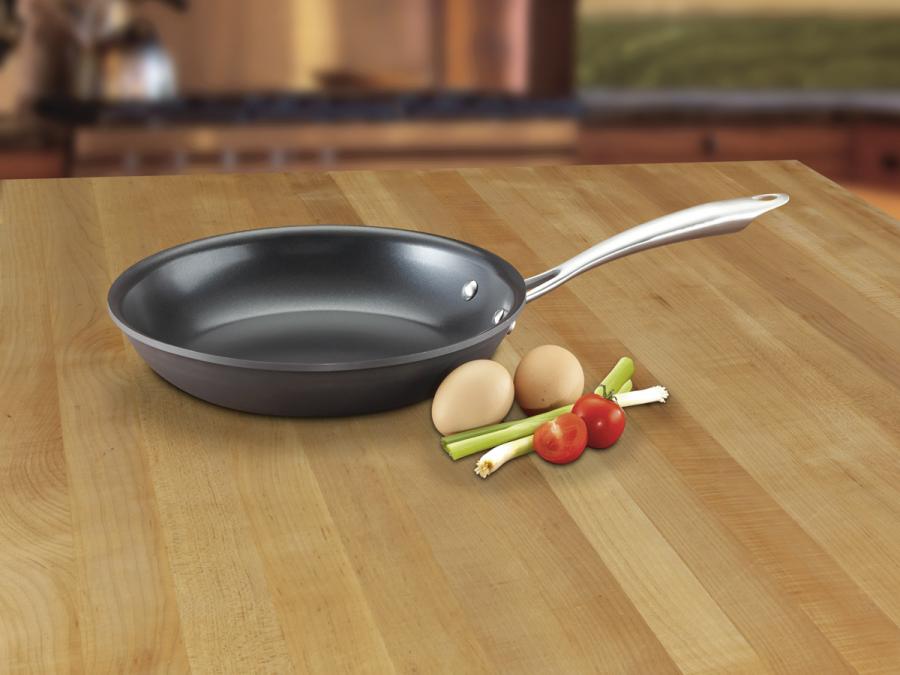Nonstick cookware lets you get by with less fat in your recipes and lets you worry less about burning food. Not all nonstick cookware take the same route to achieving these effects, though.
Teflon, the coating most commonly used on such cookware. Some newer materials are now being used to coat cookware like the ceramic trademarked Ecolon are also appearing on the cookware scene. Non-stick coatings have been referred to as unsafe by some sectors of the community however these concerns have largely been addressed as a case of product misuse.
Cooking at higher temperatures than recommended or cooking on surfaces that have been scratched or compromised is not recommended as it is outside their intended use. When products are used or maintained improperly, the chemicals and dyes may leach into the cooking. Sticking to the manufacturers guidelines and best use practices ensures safe use of the product.
First, swallowing isn’t a problem
Most people who worry about the safety of nonstick cookware believe that the risk lies in having chips of coating getting into food. In truth, though, Teflon is perfectly safe in this particular way. It is inert, and isn’t absorbed by the body. The danger, rather, comes from the way Teflon reacts to heat.
Excessive temperatures are a problem
Teflon is a group of polytetrafluoroethylene-based chemicals; these are plastics. Unlike, most plastics, they are highly resistant to heat, easily maintaining their integrity at temperatures as high as 450°F. When they are exposed to temperatures any higher, though, say 500°F, the capacity of these coatings to withstand heat tends to break down. While the material stays visibly intact, it changes at a molecular level, releasing toxic, carcinogenic materials that get into food.
Unfortunately for the average person using a pan on a kitchen stove, it can be hard to determine when the critical temperature level is reached on a piece of nonstick cookware. Cookware comes in different thicknesses, and stoves tend to deliver different levels of heat.
As an example, lightweight pans take no more than two minutes to reach 510°F. Heavy pans take about 7 minutes; they take three more minutes to rise to temperature levels as high as 650°F. The fumes that come out of Teflon can be immediately toxic in some cases, too; they can sicken humans, and can kill small pets.
If you are going to use Teflon-coated nonstick cookware, take these precautions
Teflon is safe to use if you’re very careful.
- Always use such cookware on low or medium heat; never turn your stove on high. It isn’t safe to use large burners capable of delivering any more than 12,000 BTUs or 2400 W.
- Don’t use nonstick cookware for broiling or searing. Use cast iron skillets for such purposes.
- Buy the heaviest possible nonstick cookware that you can find. They are harder to overheat.
- Keep your kitchen properly ventilated at all times.
Newer ceramic nonstick coatings are better
A more recent innovation than Teflon, ceramic-coated cookware tends to be safer. Available cookware called green pans these days, ceramic comes with none of the heat sensitivity of Teflon. Brands such as GreenPan offer coatings that are truly inert; unlike Teflon, they don’t chemically react at temperatures achievable on kitchen stoves.
While ceramic-coated cookware tends to be somewhat harder to take care of and tends to not last as long as Teflon, it comes with no negative health consequences. To many users, this is no small benefit.
Jon Eldridge has experience as a hardware chain buyer and likes to pass on his insights and tips to an online audience. He is a regular writer for a number of relevant consumer websites.

